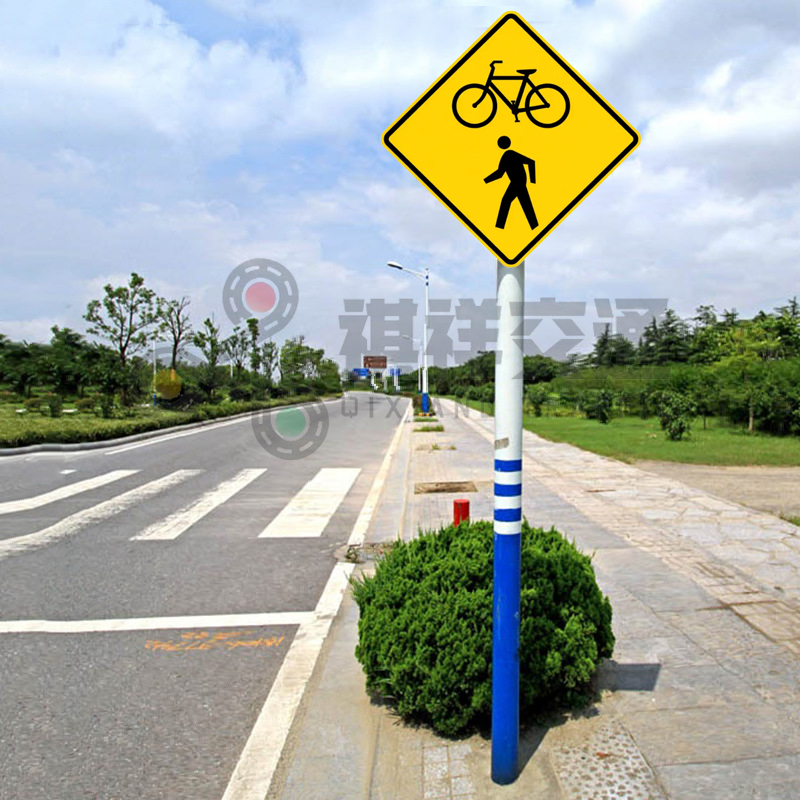In urban planning and road safety, pedestrian crossing signs play a vital role in ensuring pedestrian safety. These signs are designed to alert drivers to the presence of pedestrians and indicate where it is safe to cross. However, not all pedestrian crossing signs are created equal. Choosing the right signs can significantly impact pedestrian safety and traffic flow. In this article, we’ll look at the key factors to consider when choosing a good pedestrian crossing sign.
Understand the Importance of Pedestrian Crossing Signs
Before diving into the selection process, it is important to understand why pedestrian crossing signs are so important. These signs serve several purposes:
1. Safety: They help reduce accidents by alerting drivers to the presence of pedestrians.
2. Guidance: They provide clear instructions to drivers and pedestrians about where crossing is allowed.
3. Visibility: Well-designed signs improve visibility, especially in low light or inclement weather. Given their importance, choosing appropriate crosswalk signs is not only a matter of aesthetics, but also a matter of public safety.
Key Factors to Consider
1. Comply with regulations
The first step in selecting a crosswalk sign is to ensure that it complies with local, state and national regulations. Many states have specific guidelines governing the design, size, color, and placement of crosswalk signs. For example, in the United States, the Manual on Uniform Traffic Control Devices (MUTCD) provides standards for traffic signs, including crosswalk signs. Please be sure to check the relevant regulations in your area to ensure compliance.
2. Good visibility and reflectivity
Crosswalk signs with good visibility and reflectivity must be clearly visible to drivers and pedestrians. This means taking the following factors into consideration:
Color: Pedestrian signs often use bright colors like yellow or fluorescent green to attract attention.
Size: Signs should be large enough to be visible from a distance, especially in high-speed areas.
Reflectivity: Signs with reflective materials enhance visibility at night or during adverse weather conditions. Look for signs that meet reflectivity standards set by the Department of Traffic Safety.
3. Design and Symbolism
The design of crosswalk signs is critical to effective communication. The symbols used should be universally recognized and easy to understand. Common designs include:
Pedestrian Icon:
The simple silhouette of a pedestrian is widely recognized and conveys a message clearly.
Text Message:
Some signs include text such as ‘Pedestrians Crossing’; or ‘Yield to Pedestrians’; to provide additional clarity. When choosing a design, consider the demographics of the area. For example, in areas with large populations of non-native speakers, symbols may be more effective than words.
4. Location and Height
The effectiveness of a crosswalk sign is also affected by its location. Signs should be placed at a height that is easily visible to both drivers and pedestrians. Generally, the base of the sign should be at least 7 feet above the ground to avoid obstruction by vehicles or pedestrians. Additionally, signs should be placed far enough away from the crossing to allow drivers sufficient time to react.
5. Durability and Maintenance
Crosswalk signs are exposed to a variety of environmental conditions, including rain, snow and sunlight. Therefore, it is crucial to choose signs made from durable materials that can withstand the elements.
Look for signs with the following characteristics:
Weather Resistance:
Materials such as aluminum or high-density polyethylene (HDPE) are often used for durability.
Low Maintenance:
Signs that require minimal maintenance will save time and resources in the long run.
6. Integrate with Other Traffic Control Devices
Good crosswalk signs should work in harmony with other traffic control devices, such as traffic lights, speed limit signs and road markings. Consider how signs fit into the area's overall traffic management plan. For example, in high-traffic areas, it may be helpful to install flashing lights or additional signs to alert drivers to the presence of pedestrians.
7. Community Input and Education
Finally, involving the community in the decision-making process can lead to better outcomes. Involving local residents, businesses and pedestrian advocacy groups can provide valuable insights into the specific needs of the area. Additionally, educating the community on the importance of crosswalk signs and how to use them can increase their effectiveness.
Conclusion
Selecting a good pedestrian crossing sign is a multifaceted process that requires careful consideration of a variety of factors, including regulatory compliance, visibility, design, location, durability, integration with other transportation devices, and community input. By prioritizing these elements, city planners and safety officials can significantly improve pedestrian safety and contribute to a more walkable environment. Ultimately, appropriate crosswalk signs can save lives and promote a culture of safety on our roadways.
Post time: Nov-15-2024







